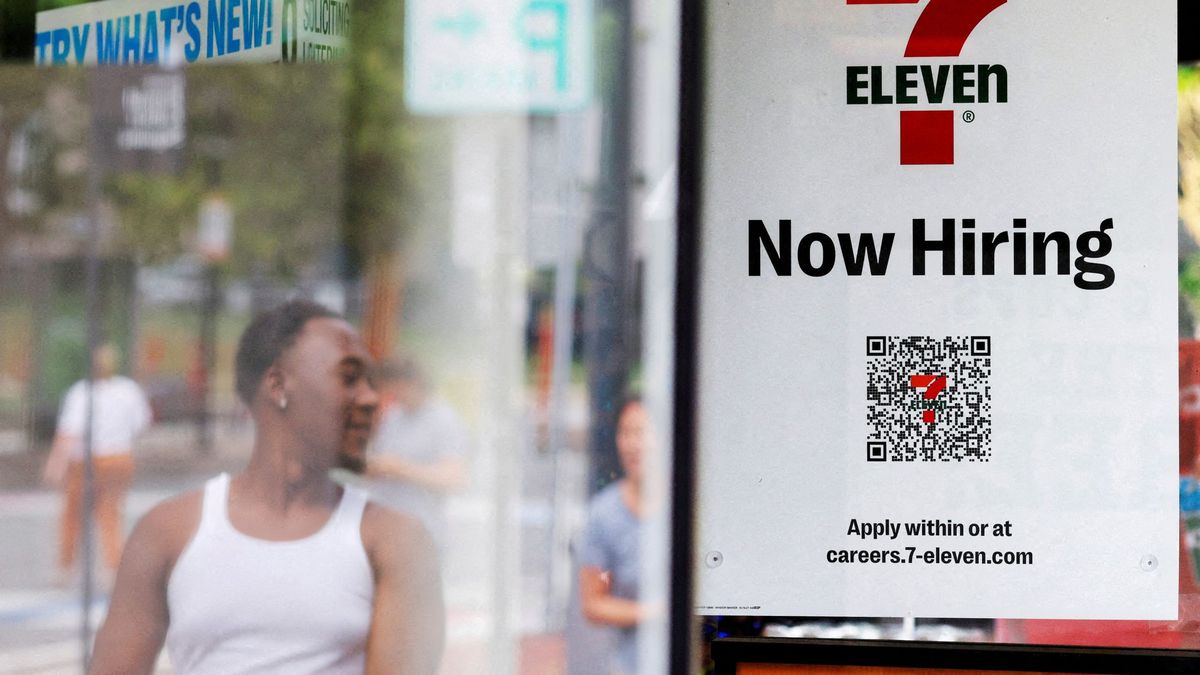The economy of USA ended 2023 with the labor scars of the Covid-19 pandemic effectively healed and with a dilemma for the political leaders of the Federal Reserve (Fed)who have until now waited in vain for wage and employment growth to cool to a sustainable level.
The addition of 216,000 jobs to the payrolls of USA in December and wage growth of 4.1% exceeded expectations, leaving the Fed still waiting for clear signs of a slowdown in the labor market and leads traders of contracts linked to the reference federal funds rate to reduce expectations that it will begin to cut rates at its March meeting.
Monthly employment growth of about 100,000 jobs and annual wage growth of about 3% are the approximate benchmarks that the Federal Reserve would consider consistent with its goal of inflation Of 2%.
“Workers continue to have the upper hand in the current environment, with strong wage growth and abundant employment opportunities,” wrote Ben Ayers, chief economist at Nationwide. The fact that wage growth remains above 4% raises concerns that inflation in labor-intensive service industries may be difficult to quell and represents “another blow to the chances that the Fed cut rates early this spring,” Reuters reported.
Expectations for the start of the Fed’s bearish rate cycle
At its December meeting, the Fed It maintained the reference interest rate in the current range of between 5.25% and 5.5%. But the language of the declaration monetary politics issued after the December 12-13 session was modified to allow for the possibility that no further rate hikes were necessary, while new projections showed that most policymakers expected three-quarter point rate cuts to be appropriate. percentage by the end of 2024.
The minutes of that meeting reflected a growing sense among officials that they may be approaching a point at which the risks to the employment and the growth economic posed by the current level of interest rates are more serious than those posed by inflation which has fallen faster than expected lately and which, by some measures, is already close to the 2% target. However, the labor market remains a puzzle.
The US labor market, more doubts than certainties
He employment payroll has grown by 14 million over the past three years, a historic streak that has not only replaced jobs lost when parts of the economy were shut down at the start of the pandemic, but is now slightly above the level that would have been reached according to the reference point of the Fed for sustainable employment growth. The rate of unemployment It is below 4% since February 2022.
But while these figures speak to continued strength in employment, there are also undercurrents that point to a slowdown.
Revisions from previous months cut 71,000 jobs from the estimated October and November figures. On a three-month average, monthly payroll growth is below the average of 183,000 recorded in the decade before the pandemic.
Other aspects of the labor market are also returning to normal, such as time lost due to illness and labor rotation measures, such as job abandonment rate, which are at or near pre-pandemic levels. The ratio of job openings to the number of unemployed people looking for work has also approached its pre-pandemic level.
In the minutes of the December meeting of the Federal Reserve “several” of its officials were said to have begun to question how much longer tight monetary policy would be necessary, and “pointed to the downside risks to the economy that would be associated with an overly restrictive stance.”
“A few” went further and said that the Fed could soon face explicit trade-offs between maintaining a healthy labor market and continued progress in inflation. The Fed under the presidency of Jerome Powell has so far avoided that difficult choice, with inflation continuing to fall even along with job and wage gains.
That could reflect changes in the functioning of the economy. Fed officials currently estimate that an unemployment rate of around 4.1% is consistent with inflation remaining stable at the 2% target, but improvements in employment adequacy, for example, or in Worker productivity could have dropped to that level, at least in the short term.
Or it could simply be a late reckoning, something labor advocates say the Fed should get ahead of.
“Job growth has visibly slowed,” said Skanda Amarnath, chief executive of Employ America, pointing to both revisions to previous months’ payroll figures based on a survey of businesses and weaker employment levels reflected in a separate survey of households. “The Fed should be rebalancing its focus from yesterday’s inflation challenges to the potential downside risks facing the labor market in 2024.”
Source: Ambito




